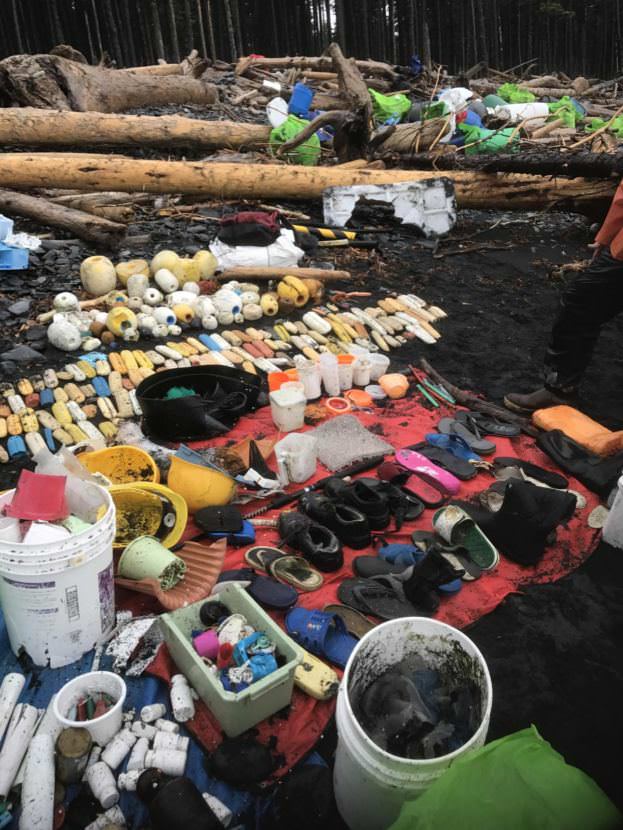
Millions of pounds of plastic debris washes up on the Gulf of Alaska’s remote shores each year. It washes up faster than it can be collected and clean-up efforts cost millions. That can seem overwhelming for volunteers who are out there year after year, cleaning the same beaches. But, one man doesn’t let that discourage him in the slightest.
Chris Pallister is president of Gulf of Alaska Keeper, an environmental non-profit that focuses on marine debris. It’s been raining all day and his crew of family and friends climb over wet logs, collecting every shred of plastic wedged in the maze of dead trees. Pallister and his wife Patty Zwollo are weighing the trash, then sorting the plastic into more than 150 different categories.
“We’ll have five-gallon jugs, fuel canisters, nets, lines and various categories of that. We have all the beverage bottles which we break into three categories,” Pallister explained.
Even the plastic wads from shotgun shells are individually counted.
“What we’re trying to do is figure out the sources of it. You know at some point, somebody has to pay to clean this stuff up,” Pallister said as he pored over fishing buoys piled on a red tarp. “So you have to have some kind of assessment, who you pin it on, which industry, which countries.”
Zwollo keeps track of the numbers. The data shows the source of the trash and also how fast some of these items are crossing the Pacific Ocean, particularly pieces from the 2011 tsunami in Japan.
Light material like styrofoam peaked in 2012 and has now tapered off to pre-tsunami levels. But, heavier plastics, such as Japanese aquaculture baskets, are still showing up. Pieces of the vibrant containers litter the beach, several of them stuck beneath heavy logs.
This is day two of a six-day trip to clean up Gore Point near the eastern tip of the Kenai Peninsula. It’s relatively short compared to Pallister’s typical 30-day trips. Pallister and his family have been involved in cleaning up beaches since 2002, and he formed Gulf of Alaska Keeper in 2005.
Yesterday, they cleaned up 1,500 pounds. Today, Pallister is expecting much more.
“This is really bad. I think by the time we get done with this little section of beach, we’ll probably pick up maybe 3 tons of debris on a third of a mile,” Pallister noted as he looked down the beach.
Plastic washes up faster than it can be picked up. There are places in Prince William Sound, where Pallister also works, that have 20 to 30 tons of plastic per square mile. The remote locations and mountains of plastic make Pallister’s work incredibly expensive.
One summer of beach combing can cost about $1 million. What’s collected is stored in large nylon bags placed above the tide line. Pallister hires helicopters and barges to remove nearly a million pounds of plastic every few years. Those projects can run about $25,000 per day.
Tracking down funding for that work can be a full-time job of its own. Pallister does all his own grant writing and maintains two boats in order to keep the non-profit going. All this can sound pretty defeating.
“All this stuff, who knows. It’ll keep you awake at night if you think about it too much,” Pallister sighed.
Pallister has made several trips to Washington D.C. to testify before Congress, and he said he’s been working with Alaska’s congressional delegation.
There are two bills related to marine debris working their way through Washington D.C. Pallister said things could move quite a bit faster, but he’s pleased decision makers are shifting their attention to the issue. But, until legislative action actually happens, Pallister will continue working to clean up the problem piece by piece.




